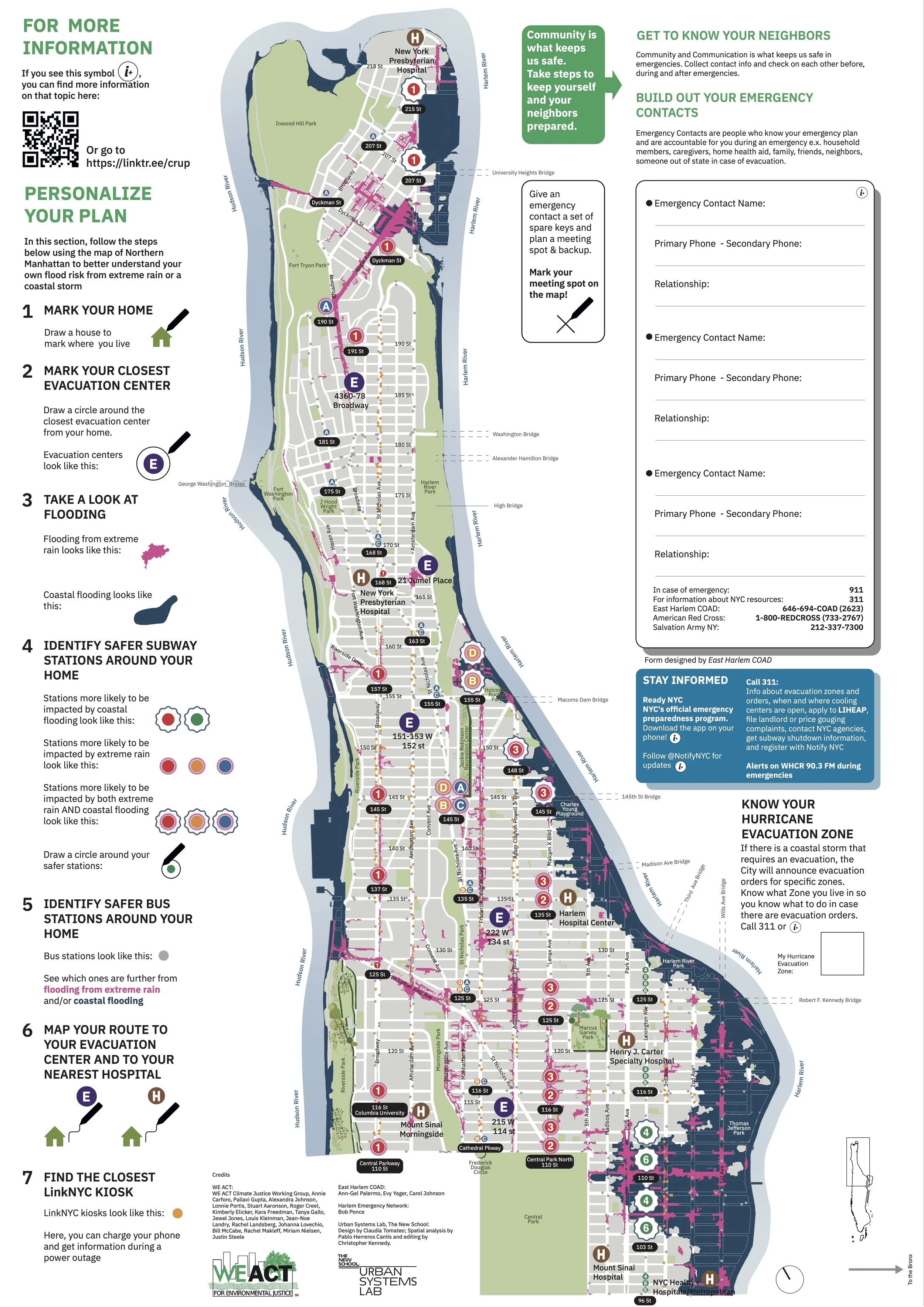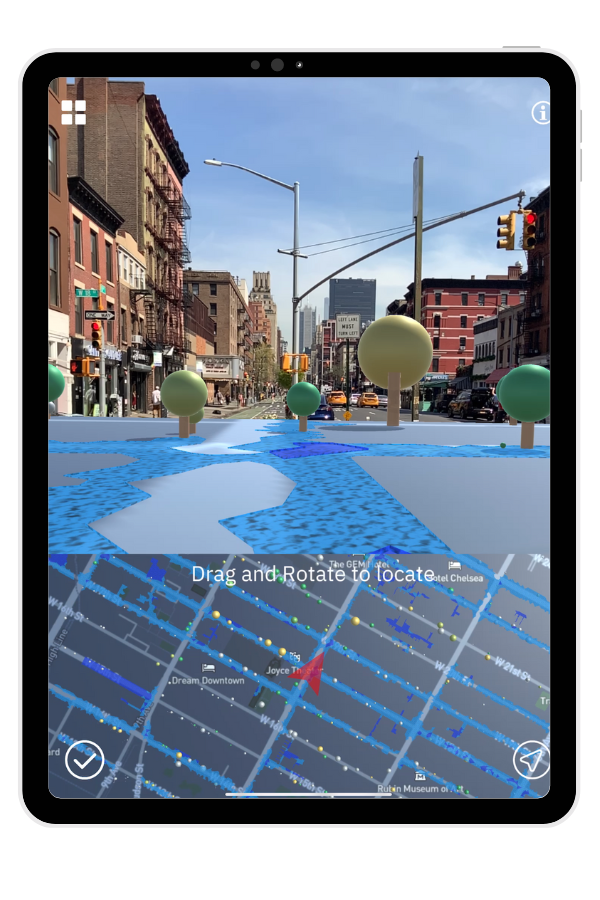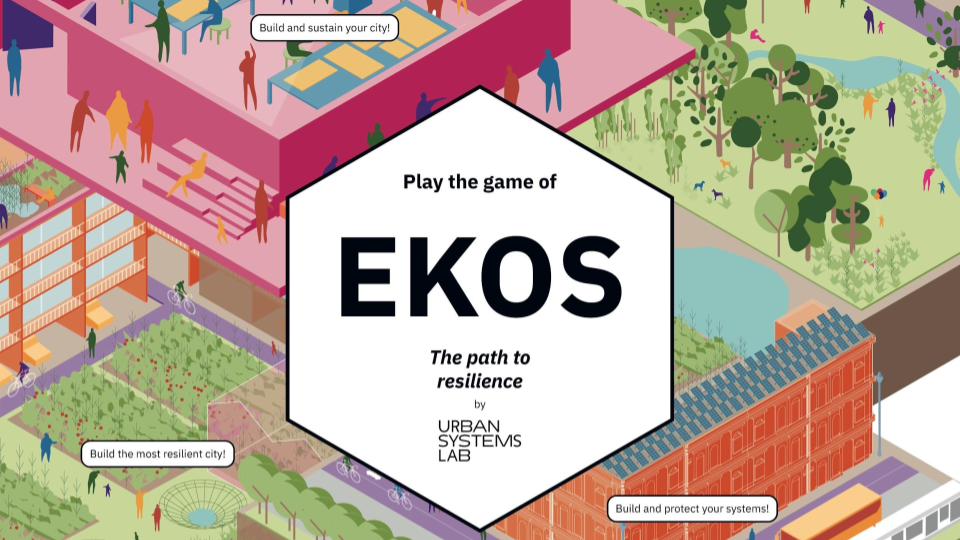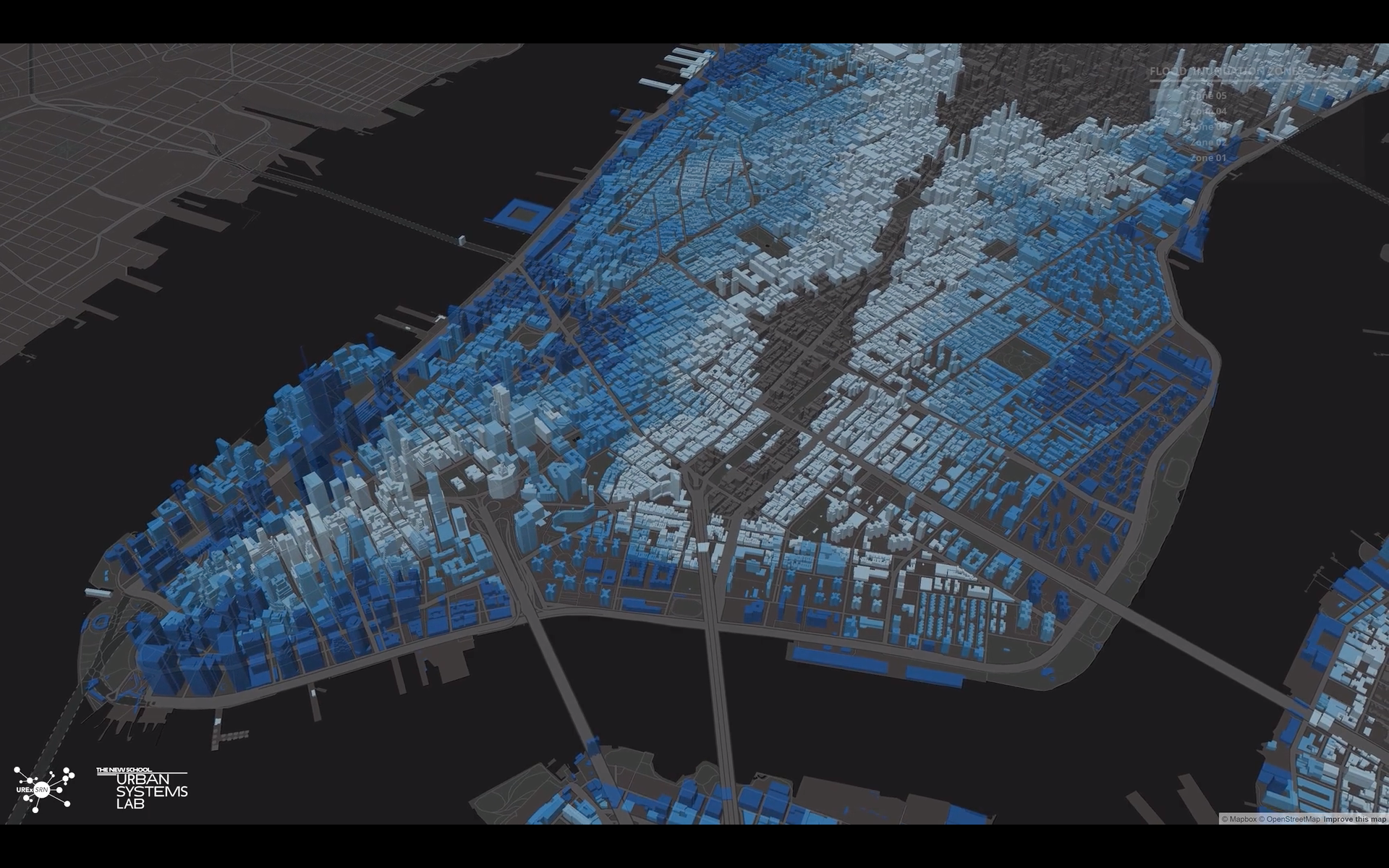A global assessment of research and practice that charts a path for scaling nature-based solutions (NbS) to make cities more resilient, equitable, and sustainable.
Read MoreThe Nature-based Solutions for Urban Sustainability Special Feature highlights the role of nature-based solutions (NBS) in addressing the complex challenges of urban resilience and sustainability amid climate change.
Read MoreClimateIQ is an AI driven, multi-hazard risk and vulnerability tool leveraging Machine Learning, Big Data, and multiple climate hazard model environments to reveal high resolution hotspots of overlapping climate risks in cities and urbanized regions.
Read MoreThe NYC Flood Vulnerability Index (FVI) assesses the distribution of vulnerability to flooding across NYC in order to guide flood resilience policies and programs. Vulnerability contains three components: exposure to a hazard, susceptibility to harm from the exposure, and capacity to recover.
Read MoreGIequity.org is a platform developed by the Urban Systems Lab to share findings from a study of 122 green infrastructure plans across 20 U.S. cities, highlighting inequities in planning and offering insights, data, and tools to support more just and effective green infrastructure strategies.
Read MoreThe Climate Ready Uptown Plan (CRUP) is a guide and map to help Northern Manhattan community members understand their individual risk to climate related disasters
Read MoreA report developed by researchers at the Urban Systems Lab, Cornell University and others, in partnership with RISE and Universe City exploring strategies for adapting to multiple, compounding climate hazards in New York City.
Read MoreThe Milwaukee Flood and Health Vulnerability Assessment (FHVA) is an assessment tool which identifies communities across Milwaukee where exposure to urban flooding and pre-existing health, housing and socioeconomic conditions intersect and create disproportionate vulnerabilities to the impacts caused by extreme flooding.
Read MoreA flood hazard exposure study focused on the Proctor Creek watershed—an area historically impacted by pluvial flooding.
Read MoreThis report evaluates a green infrastructure (GI) network to reduce combined sewer overflows, urban flooding, and climate risks in Southwest Yonkers. Using hydrologic modeling and ecosystem service prioritization, it proposes targeted GI solutions for a 52-acre sewershed along Riverdale Avenue.
Read MoreThe Saw Mill River Watershed Flood Vulnerability Modeling Project, led by the Saw Mill River Coalition and supported by the Urban Systems Lab, assesses climate-driven flood risks and provides tools for long-term land-use planning. The project supports equitable resilience by integrating flood modeling with habitat restoration, public access, and environmental justice goals.
Read MoreOcellus XR is a mixed reality application that leverages the Urban Systems Lab’s Data Visualization Platform to present users with unique interactive geospatial maps of heat, flood risk and other climate indicators in New York City.
Read MoreUrban Flooding, Equity, and Green Infrastructure: Syracuse as Case Study is a storymap developed to explore Onondaga County’s ambitious green infrastructure (GI) program, which addresses water quality issues caused by Combined Sewer Overflows (CSOs) in Syracuse’s Combined Sewer System, while also highlighting equity considerations in flood risk reduction.
Read MoreStormwater.nyc is a mapping platform that visualizes NYC stormwater resiliency by integrating public data on demographics, land use, critical infrastructure, green spaces, and floodplains from the New York Panel on Climate Change.
Read MoreEkos is a multiplayer board game that uses systems thinking and strategy to explore concept of urban resilience and nature-based solutions.
Read MoreThis report assesses future climate change and its potential impacts, to inform decision-making by the City of New York.
Read MoreAn interactive web application that visualizes Social, Ecological, and Technological Systems (SETS) data.
Read MoreA report from the World Economic Forum's Global Commission on BiodiverCities to synthesize the latest research with practical solutions in the service of sustainable, inclusive and nature-positive urban development.
Read MoreA concise and accessible synthesis of IPCC Working Group I material for urban policymakers.
Read MoreThis report highlights a collaborative efforts with multiple NYC agencies to co-develop six transformative scenarios for New York City’s climate resilience and adaptation to extreme events by 2100.
Read More

















